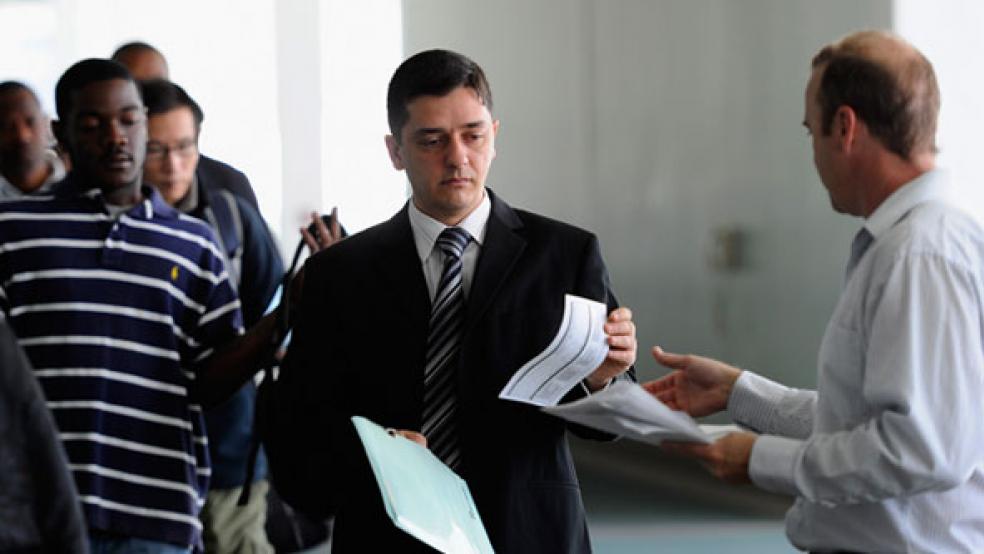All the king’s horses and all the king’s men won’t be able to put the economy back together again.
That was the belief after the 2001 recession. The stock market bubble had collapsed, and the common view among economists and policymakers was that we would not be able to return to the high levels of employment we had experienced prior to the 2001 recession.
But Federal Reserve chairman Alan Greenspan wasn’t buying this line of thought. Many of his colleagues at the Fed were worried that any attempt to push the unemployment rate below the “new normal” of 6 percent, or thereabouts, to the 4 percent level that was normal prior to the recession would be highly inflationary.
Greenspan, however, noting the lack of evidence of any actual inflationary pressure, decided the Fed should push ahead instead of trying to slow down the economy as it approached 6 percent unemployment. And it turned out that he was right. We were able to reestablish the low pre-recession unemployment rates without experiencing inflation problems.
If the fall is permanent, then the new normal for unemployment will be in the 6 percent to 7 percent range.
We are having the same debate again. One of the most important questions policymakers face right now is whether the downturn in GDP that caused the recession is mostly permanent or mostly temporary. If it’s temporary – if we can put things back together again – then we will be able to return to pre-crisis levels of unemployment, or nearly so.
But if the fall is permanent, then the new normal for unemployment will be in the 6 percent to 7 percent range rather than the approximately four percent level that we were able to attain prior to the recession.
Which side is correct? The emerging view seems to be that much of the fall in GDP during the recession is permanent. If so, then we are already approaching the much higher unemployment rate that will prevail in the new normal, and hence there is not much more that policy can do.
But I am not ready to give in just yet. First, as Nobel winning economist Robert Lucas has argued, a look at the US from the late 1800s to the present shows that we have always bounced back before, and he believes we will do so again. Second, a look across countries shows that there is no set outcome after a financial crisis. In some cases, economies fully recover; in other cases, they do not, and it’s difficult to find systematic differences between the countries that can be used to predict which outcome will occur.
Failing to provide enough help for the economy is a more costly error than providing too much help and then having to back off.
If we don’t know for sure how much of the damage from the recession will be permanent, and we don’t, how should policymakers respond? If the damage is permanent then it’s time to consider reversing policy, but if it’s temporary policymakers should keep pushing ahead.
One guidepost comes from the fact that failing to provide enough help for the economy is a more costly error than providing too much help and then having to back off. The reason for this is that failing to provide enough help, in particular the failure to aggressively attack unemployment, can itself cause permanent losses. As Brad DeLong and Larry Summers point out in a new paper, the danger is that the longer workers remain idle, the more likely it is that they will never be employed again, or be employed in jobs that do not take full advantage of their capabilities. Thus, the failure to provide enough help can be very costly.
On the other side, however, the effects of providing too much help are largely temporary. If there is an outbreak of inflation the Fed can reverse policy and fix the problem without suffering the kinds of long-term effects associated with being too timid. This means that although we can’t be sure whether the damage is permanent or temporary, policy should proceed as though it’s mostly temporary until the picture clears up.
Fiscal authorities could help the Fed avoid the losses that come with long-term unemployment. We have a problem with our crumbling infrastructure, and if we fail to address this problem it will reduce our long-run productive potential. If we put people to work building infrastructure, that would help with the unemployment problem and provide the infrastructure that we need. Since we need the infrastructure in any case, this option carries very little if any risk.
But Congress is unlikely to expand spending on infrastructure due to unfounded deficit worries and political gridlock. That leaves the Fed, but there is resistance here as well. Even though there is little to suggest that inflation is becoming a problem, many on the Fed are arguing inflation is just around the corner and that it’s close to or past the time to begin reversing policy. Does Bernanke have the courage, foresight, and persuasiveness Greenspan displayed when he pushed against and overcame prevailing opinion in similar circumstances?
Let's hope that he does.






